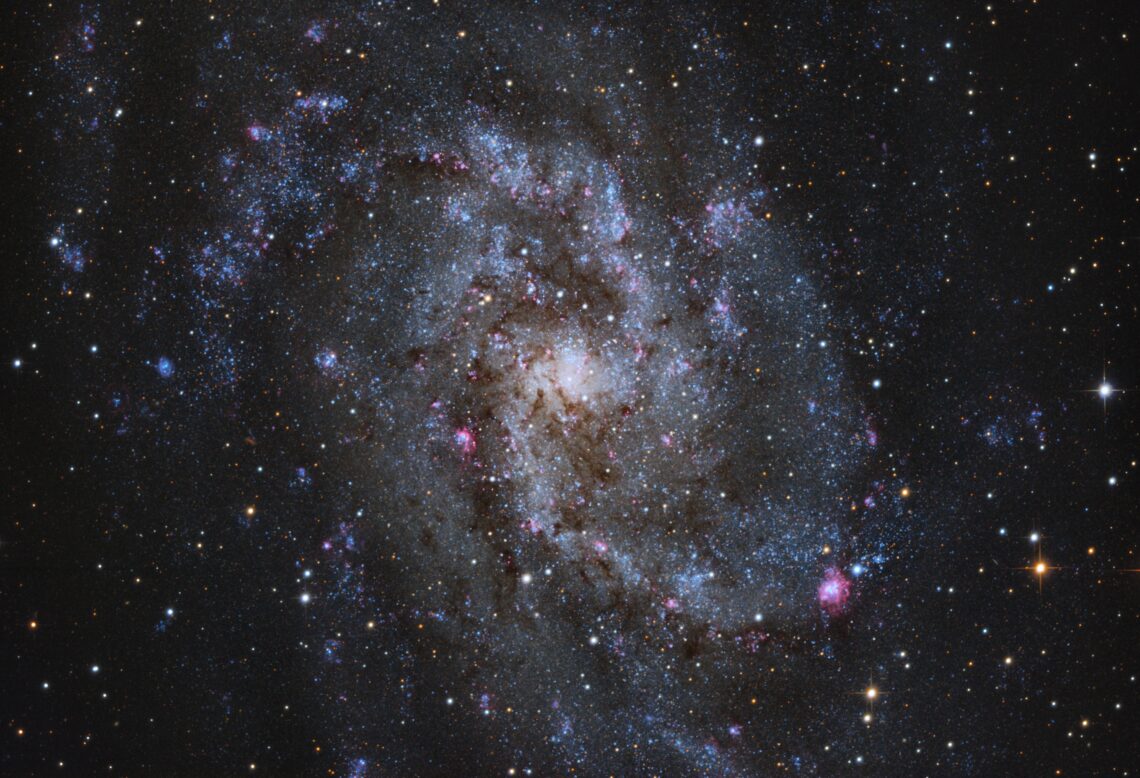After installing our new Planewave CDK17, the first galaxy we aimed at is the Triangulum Galaxy, M33. This telescope with a focal length of almost 3 meters in combination with the QHY600M CMOS camera gives an unbinned pixel scale of 0.26 arcsec/pixel. Only during nights with exceptional seeing conditions, we can really make use of this enormous resolution. Typically we will use 2×2 binning, as done for this image, which still shows remarkable detail. The field of view is 0.7° x 0.47° and will nicely cover the majority of galaxies… so we expect lots of great galaxy images from this setup.
The Triangulum Galaxy (M33, NGC598) the third largest member of the local group, with its larger sisters the Andromeda Galaxy and our Milky Way. It consists of 40 billion stars, really small compared to the 400 billion of the Milky Way and the 1 trillion of the Andromeda Galaxy. It is a beautiful spiral galaxy with lots of structure in the spiral arms and many clusters of hot blue stars and pink hydrogen emissions nebulae, plus some dramatic dark dust nebulae that trace the structure of the spiral arms. We will collect some more data, including narrowband, to get out even more detail.
As always, click on the image to see a full-resolution view, which allows you to zoom in even further to explore the many tiny details.

| Telescope | Planewave CDK17, D=430mm, f=2940 mm |
| Camera | QHY600M Full Frame CMOS, 9-Slot Filter Wheel with Baader Filters |
| Exposures | 10 hours total, LRGB 180+49+45+32 x 120sec, BIN 2×2 |
| Data taken | 12,30 September 2021 |
| Site | TURMX @ E-EyE Observatory, Extremadura |
| Processing | Robert Roth, 3 October 2021 |
